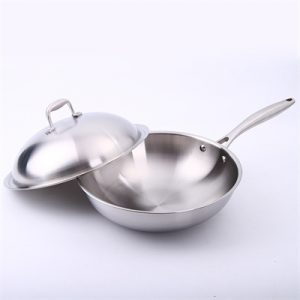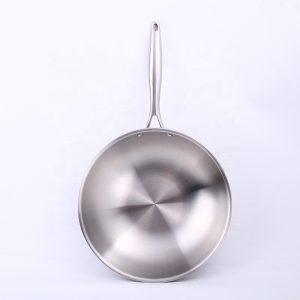What are the precautions for the use of stainless steel pan?
Stainless steel pans are common kitchen utensils in the family nowadays. Stainless steel pans are not only fashionable in appearance, but also very carefree. However, when using stainless steel pans, we must pay attention to some related issues, so that we can choose stainless steel pans correctly. In addition, When stainless steel pans are used, they will often inadvertently cause the stainless steel pans to turn black. At this time, it will not only affect the appearance, but also affect the health. Let’s take a look at the detailed introduction.
Precautions for the use of stainless steel pan:
1. Pay attention to the low thermal conductivity of stainless steel, slow heat dissipation at the bottom, and the temperature is easy to concentrate. Therefore, when using stainless steel cookware, the firepower should not be too large. Try to make the bottom heating surface wide and even, so as to save fuel and prevent the food at the bottom of the pan from scorching. .
2. If there is food sticking and burnt at the bottom of the pan, it can be soaked in water and then gently scraped off with bamboo or wood chips. There is no need to scrape off with sharp tools such as kitchen knives; after washing, use a soft cloth to dry and place in a dry place.
3. After the cooking utensils are used for a period of time, a layer of mist will appear on the surface of the stainless steel, making the surface of the cooking utensils dark. At this time, it can be wiped with a soft cloth dipped in decontamination powder or detergent to restore the brightness. If the outer surface is blackened by smoke, this method can also be used.
4. The cooking utensils should avoid collision with sharp and hard objects, so as to avoid scratches and dents, which will affect the appearance and sealing performance.
5. When using a stainless steel pan, do not let water stains on the bottom of the pan. When it is used on a briquettes stove, because the briquettes contain sulfur, sulfur dioxide and sulfur trioxide will be produced when they are burned. When it encounters water, it will generate sulfurous acid and sulfuric acid, which will corrode the bottom of the pan.








